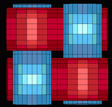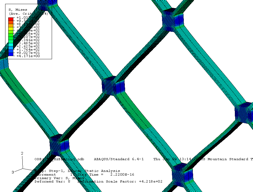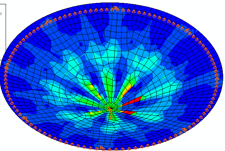Theoretical Fracture Mechanics and Composites Toughening Modeling
Theoretical models simulating the tensile behavior of cement composites are developed. These models relate the properties of the matrix, aggregate, fiber, fabric, and interface and the damage parameters to the overall mechanical response of the composites. Using analytical models for the pullout response, the effect of toughening is characterized. Damage parameters are defined using cracking parameters such as density, spacing, and crack width. Models are verified using finite element approach, finite difference approach, fracture mechanics, and composite laminate theory.


The hexagonal elements used for a 2-D wall system. B) The racking response of a wall subjected to lateral shear load.


- Mobasher, B., Peled, A., “Use of R-Curves for Characterization of Toughening in Fiber Reinforced Concrete,” Proceedings, International Conferences on Fracture Mechanics of Concrete and Concrete Structures (FraMCoS V) Vail Colorado, 2004. pp.1137-1143. [download]
- Barzin Mobasher, A Tribute to the Paper: Hillerborg, A., Modeer, M., and Petersson, P. E. “Analysis of Crack Formation and Crack Growth in Concrete by Means of Fracture Mechanics and Finite Elements,” Cement and Concrete Research, 1976, ACI Special Publication, SP-249-11. pp 233-246, 2008. [download]
- B. Mobasher, “Mechanical Properties of Fabric Reinforced Cement Composite Systems,” NSF Civil, Mechanical and Manufacturing Innovation (CMMI) Grantee Conference, January 2008, Knoxville, TN